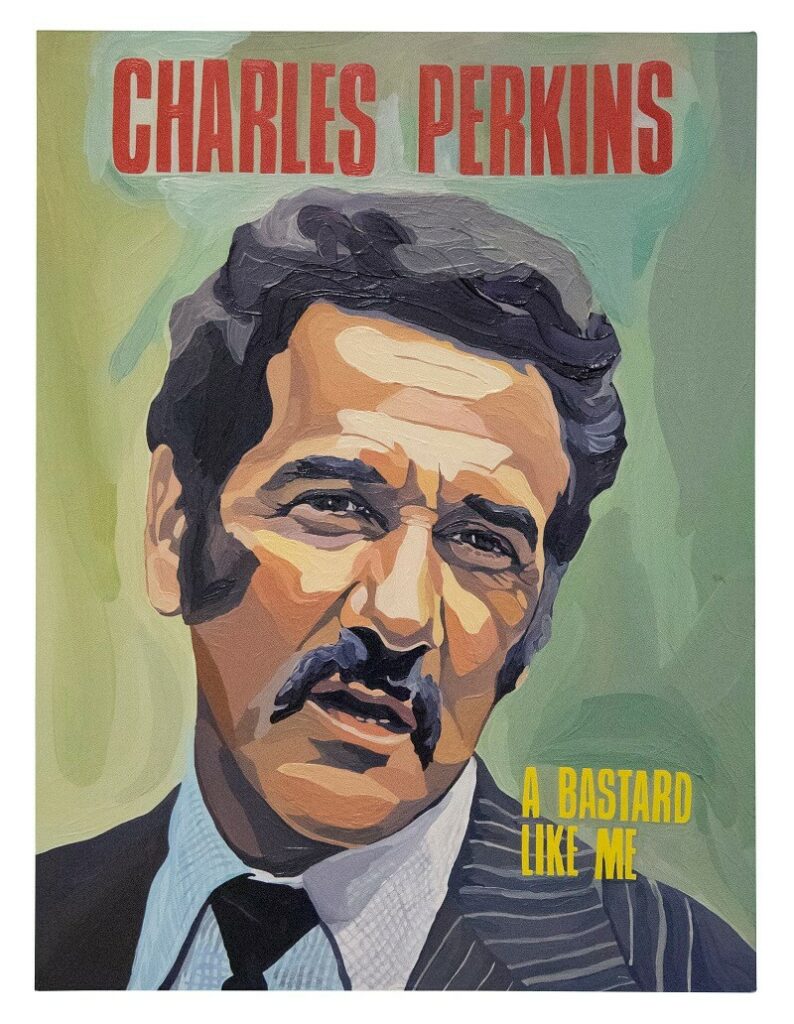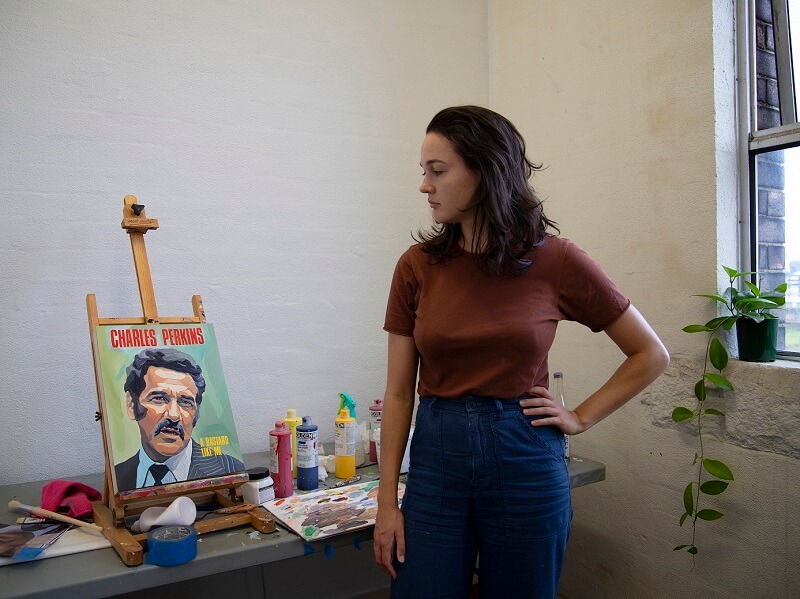The ‘Telstra National Aboriginal and Torres Strait Islander Art Awards’ (Telstra NATSIAA) and exhibition has been running at the Museum and Art Gallery of the Northern Territory (MAGNT) since 1984. The annual contemporary showcase shines a light on the exceptional artistic talent and creative vision of emerging and established Indigenous artists from around Australia. The winners of the 2021 ‘Telstra NATSIAA’s’ will be revealed at the Awards ceremony online on 6 August and the exhibition of 65 finalists will be open to visitors from 7 August.

Thea Anamara Perkins is an Arrernte and Kalkadoon woman and emerging artist born and based in Sydney who has grown up alongside a family of creatives and activists who have been instrumental in empowering her to “speak up and do it her way”. Thea articulates her stories and ideas through landscapes, portraiture and installation works, and has developed a distinct painting style with a bold visual appeal. She has a growing list of artistic achievements including winner of the 2020 ‘Alice Art Prize’ and the 2020 Australia Council for the Art’s ‘Dreaming Award’, as well as being a three-time finalist in ‘The Archibald’, but that’s not all.
And right now, Thea is one of the 65 finalists in this year’s ‘Telstra NATSIAA’s’ with a portrait of her grandfather Charles Perkins (1936-2000) renowned Aboriginal civil rights activist. Taking the cover of her grandfather’s autobiography A Bastard Like Me as the subject for this work, Thea’s portrait pays tribute to Charles’ fighting spirit and brings his extraordinary life story into the present. “I’ve taken this image from his autobiography. It is something I have grown up with my whole life and we’ve always had these books present. They are quite rare, so when they do pop up, we buy them because they aren’t in print anymore,” Thea says. “It is only recently that I felt that I was on the technical level to tackle this image, but it is also a response to everything that has been happening in the world like Black Lives Matter and the continued issues in this country. It felt like the right time to evoke that spirit with this portrait,” she adds.
Thea has a firm belief in the importance of having a voice. She is passionate about the representation of Aboriginal people and their ongoing fight for justice and is concerned with issues of the environment and climate change and the impact it has on the lives of First Nations People. Throughout her life, Thea has experienced both creative expression and activism as powerful platforms to spark conversation and effect change through the coming together of individual and collective campaigning.
At what point in your life did your family’s work and achievements begin to resonate with you?
Always. I feel very privileged. What’s happening in politics has always been a dinner table discussion. I’ve been going to rallies my whole life and I’ve always been aware of what people are doing. People often ask about being in a shadow but it’s never felt that way because it has always been an empowered thing that you can speak up and do it your own way. It’s been a wonderful insight to see that these kinds of big, people powered movements, which is still a collective of individuals, can have a great impact. I think it is a beautiful thing that all of my family are doing it in their own way, through film, acting, or doing environmental work like my sister. There are all these avenues that you can express that spirit.
When did you know you wanted to be an artist?
I’ve always made art compulsively and drawn and painted. But I think becoming an artist came a bit later, it was really tied to confidence I think. You know… you can be artmaking, but it is a whole other thing to have art as your profession. Art for me is very much about voice, so it is really amazing to be engaging with what’s happening in the world and be part of the conversation.
Who are some of the artists that influence your arts practice?
My top three influences would be Gordon Bennett because I think he is a great exemplar of interpreting and crystallising information. He was ahead of his times. Especially when trying to articulate ideas of Aboriginality and racism but also art itself in composition and in interacting with art history. But he did it with a kind of almost clinical precision. I consider him to be a genius in the way that he broke down all of these ideas and articulated them in his work. I also love Emily Kngwarreye. I think she was a genius for the way that she came to art later in life but still had this virtuoso grasp of all of the kinds of things that are celebrated in the western Modern art movement. She did it with absolute fluency without necessarily having encountered that. Being a woman in her 80s is amazing, coming from her lifetime, and coming to use acrylics are really fascinating things about her. Her paintings are so beautiful and expressive. And Carravaggio, the chiaroscuro. He was radical in his own right working in his own time, as well as his depictions of people and how he dealt with light, contrast and colour, for really expressive emotive effects.
What are you working on now?
I’m in an experimental stage. I want to do a series with skin, there’s so much in it. The politics of skin and skin colour, especially as an Aboriginal person. But also skin names and how that kind of tethers you to Country or is part of Country, and also part of kinship. So how you relate to other people. There’s also the idea that skin was collected by colonists, and the idea of women and skin. That’s the starting point for what I’m looking at, at the moment.

Outside of her arts practice, Thea is a co-director of Firstdraft, Australia’s longest running Artist Run Initiative, where she had her first exhibition. Thea says her “primary objective of being on the board is to further their First Nations program and build it into the framework.” Thea says it crucial to give “artists the encouragement and support they need as emerging practitioners. I think especially with funding cuts to the arts in Australia, its more important than ever to support artists. I’m worried to think about what will happen for artists without that initial support. We could be hamstringing a whole range of emerging artists because they don’t get that support when they are first starting out.”
Thea is also involved with Seed, the first Indigenous-led climate organisation. “They do climate-based actions around Australia and train [members] up to take their own actions. They have this really amazing program where they are getting in young people and giving them the support and tools they need to start their own movements and mentorship. They [foster] really considered and effective actions, which is great to see in new generations of activists,” she explains. “I’m working on a series of posters at the moment that are about the impact of climate change on Alice Springs, because First Nations people have been the last to cause it and are the first and worst affected by climate change. Some of the proceeds from this project will go to Seed. I do what I can to raise awareness.”
Visit the Telstra NATSIAA and MAGNT websites to see the full list of finalists and to take a virtual tour of the ‘2020 NATSIAA’ exhibition for a taste of what’s to come in the 2021 showcase.
We wish all of the 2021 ‘Telstra NATSIAA’ finalists luck ahead of the awards ceremony and opening of the exhibition.